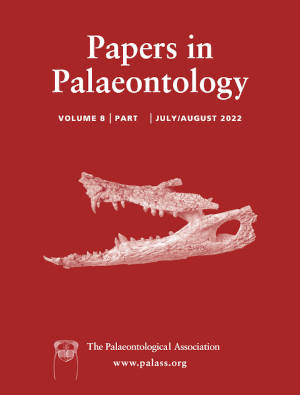Article: Cranial anatomy and systematics of Dendrerpeton cf. helogenes (Tetrapoda, Temnospondyli) from the Pennsylvanian of Joggins, revisited through micro-CT scanning
Publication: Papers in Palaeontology
Volume:
8
Part:
2
Publication Date:
2022
Article number:
e1421
Author(s):
Thomas Arbez, Jade B. Atkins, and Hillary C. Maddin
DOI:
10.1002/spp2.1421
Abstract
Abstract The Joggins Fossil Cliffs constitute an upper Carboniferous (Pennsylvanian) locality in Nova Scotia (Canada). This site, known for the rich record of fossils preserved in the palaeoenvironment in which they lived, sheds light on the late Carboniferous environment. More specifically, Joggins records one of the earliest Pennsylvanian ecosystems and is unique in preserving a rich diversity of terrestrial fauna compared with other Pennsylvanian communities, which mostly preserve aquatic fauna. For vertebrate palaeontology, the significance of Joggins lies in the discovery of the earliest amniotes (Hylonomus lyelli Dawson, Protoclepsydrops haplous Carroll, and Asaphestera platyris (Steen)) and the second earliest temnospondyl, Dendrerpeton (only Balanerpeton woodi Milner \& Sequeira occurs earlier). Computed tomography of the most complete tetrapod specimen found at Joggins, the temnospondyl amphibian currently referred to Dendrysekos helogenes Steen, made accessible the internal anatomy and revealed previously obscured anatomical structures, including the stapes, scleral plates, and partial sphenethmoid. These newly accessible features enabled a redescription of this specimen. The resulting anatomical comparisons and phylogenetic analyses suggest that the genus Dendrysekos is a junior synonym of Dendrerpeton; the diagnostic characters previously distinguishing the two genera are considered to be instead a combination of ontogenetic and preservational parameters, and the two genera were not resolved as discrete. Additionally, the phylogenetic analyses show that the interrelationships between the main early temnospondyl groups (Edopoidea, Dvinosauria, Eryopoidea and Dissorophoidea) are neither robust nor well supported, due to the low number of shared derived characters.
